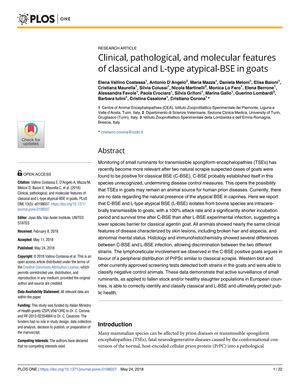Clinical, Pathological, and Molecular Features of Classical and L-Type Atypical BSE in Goats
May 2018
in “
PloS one
”

TLDR Both classical and L-type atypical BSE from cattle can infect goats with different incubation times, and tests can distinguish between the two strains.
The document reports that both classical BSE (C-BSE) and L-type atypical BSE (L-BSE) from cattle can be transmitted to goats with a 100% attack rate, with C-BSE leading to a shorter incubation period and survival time in goats, indicating a lower species barrier for the classical agent. The infected goats exhibited similar clinical symptoms, including skin lesions with broken hair and alopecia, and abnormal mental status. Histological and immunohistochemical analysis revealed differences between C-BSE and L-BSE infections, which could be used to distinguish between the two strains. The presence of PrPSc in the lymphoreticular system in C-BSE positive goats suggests a peripheral distribution similar to classical scrapie. Screening tests, including Western blot, successfully detected both strains in goats and could differentiate them from negative controls. These findings underscore the importance of active surveillance in small ruminants to identify and classify BSE strains, thereby protecting public health.




